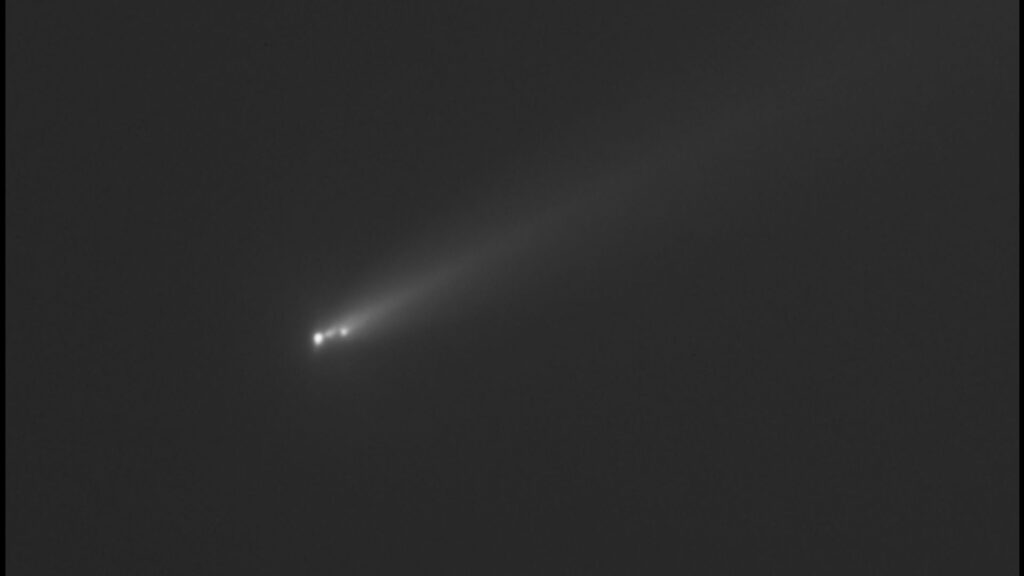New observations have revealed that the ‘other’ Comet Atlas has broken apart, turning into a cloud of debris spilling into space.
The comet, called C/2025 K1 (ATLAS), was discovered in May by astronomers from the Asteroid Earth Impact Last Alert System (ATLAS) and passed through perihelion, or the closest point to the sun, on October 8. It has no relation to the famous interstellar comet 3I/ATLAS, except that it was discovered at the same time and by the same telescope network.
you may like
But new observations made by astronomer Gianluca Masi in Manciano, Italy, show that the gravitational pull of the voyage around the sun was too much for the comet, causing it to break up into several pieces, or clouds.
“Several parts (subnuclei or debris clouds) are visible, as well as a plume just below the leading debris (first debris from the left),” Masi, an astronomer at the Campo Catino Observatory and founder of the Virtual Telescope Project, wrote in an update.
The collapse of C/2025 K1 was heralded by a sudden brightening event near perihelion that changed the comet from the greenish hue seen in many comets that fly close to the Sun (caused by the presence of diatomic carbon, which fluoresces in sunlight) to a striped golden ribbon.
The cause of this change is unknown. Some scientists have speculated that the color change may be related to the relative lack of carbon-containing molecules in the comet’s coma, the cloud of ice, gas, and dust around its body.

According to The Sky Live, if you want to see an exploded comet for yourself, take a peek into the constellation Leo. There it shines with a magnitude of 9.9. (In astronomy, lower magnitudes correspond to brighter objects; for example, Regulus, the brightest star in the constellation Leo, has an apparent magnitude of about 1.35.) The comet is still too faint to see with the naked eye, but it can be spotted with a powerful telescope or stargazing binoculars.
The comet’s survivors are scheduled to make their closest approach to Earth on November 25th. It will come within about 37 million miles (60 million kilometers), or less than half the average distance between Earth and the sun.
Source link

